| 2 November |
• yesterday • tomorrow |
| The Commemoration of All the Faithful Departed (All Souls' Day) |
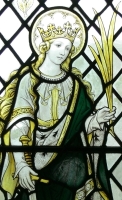
Guinevere, Guinevra, Gwenffrewi, Gwenfrewi, Wenefrida, Winefred, Winefride, Winfred
Daughter to Trevith, a member of the Welsh landed class and advisor to the king. Spiritual student of her maternal uncle Saint Beuno Gasulsych. Physically beautiful, she made a private vow of chastity, becoming a bride of Christ. Murdered when she rejected the amorous advances of a chieftain named Caradog of Hawarden; she had escaped from him, and was seeking shelter in a church when he caught and killed her. Legend says that where her head fell, a well sprang up which became a place of pilgrimage, and whose waters were reported to heal leprosy, skin diseases, and other ailments. Saint Beuno raised her back to life; he cursed Caradog who was promptly swallowed by the earth. Winifred became a nun, and later abbess at Cwytherin, Deubighshire, Wales.
c.600 at Holywell, Wales
• beheaded in the early 7th century
• c.655 of natural causes at Denbighshire, Wales
• relics translated to Shrewsbury, England in 1138
• shrine destroyed and relics scattered by order of King Henry VIII in 1540
• remaining relics taken to Rome, but returned to England in 1852, and now housed at Holywell and Shrewsbury
friend of peace (Celtic / Gaelic)
• incest victims
• martyrs
• ---
• Gwytherin, Wales
• Holywell, Wales
• Shrewsbury, England
• abbess with a ring around her neck standing near the fountain
• beheaded woman carrying her head and a martyr's palm
• beheaded woman with a block, axe, and her head at her feet
• carrying a sword and palm with a spring of water at her feet
• Celtic maiden holding a sword with a fountain at her feet, and red ring around her neck where her head has been severed and restored
• having her head restored by Saint Beuno
A virgin flourishing as the rose,
The comely bride of Him Who is the Lamb,
As the precious martyr of Christ,
Hath Winifred richly blossomed.
Sprung from the stock of Britons,
Unshakable in faith, joyful in hope,
Holy in deeds, and pure of mind,
She was free of this world's deceptions.
This virgin was slain by Caradoc,
And immediately the pit of Orcus hell swallowed him up.
For that is the place for the wicked,
And there with Satan he is burning.
In demonstrating proof of this happening,
A fountain welleth up at the bidding of God,
In the likeness of crimson reddening,
Where she was deprived of her head.
There many miracles are performed;
The blind see, and the dumb are given speech,
All manner of disease is put to flight,
When those who ask have faith.
O Winifred, our glorious lady,
Calm for us the billows of the sea,
Lest we become the ready prey of the enemy,
O compassionate one, afford us thy protection.
Amen.
- from the Complete Old Sarum Rite Missal
https://catholicsaints.info/saint-winifred-of-wales/
• 29 October as one of the Martyrs of Douai
• 1 December as one of the Martyrs of Oxford University
Educated at Winchester and Oxford in England. Fellow of New College, Oxford in 1568. Convert. Studied law at Douai, France in 1576. Returned to England in February 1578 as a schoolmaster. Married layman. Repuditated King Henry VIII's claim of supremacy in spiritual matters. Arrested in 1580, spending three years in prison in Winchester. Tried and condemned with Blessed John Slade for his belief in Winchester in April 1583, he was re-tried in Andover, and convicted again on 15 August 1583. Martyr.
1549 at Wells, Somerset, England
• hanged, drawn, and quartered on 2 November 1583 at Andover, England
• his dying words were Jesu, Jesu, esto mihi Jesus
15 December 1929 by Pope Pius XI
We consider that iron for this cause borne on earth shall surmount gold and, precious stones in Heaven. That is our mark, that is our desire. In the mean season we are threatened daily, and do look still when the hurdle shall be brought to the door. I beseech you, for God's sake, that we want not the good prayers of you all for our strength, our joy, and our perseverance unto the end.... From our school of patience the 16th September, 1583. - Blessed John Bodey, in a letter to Dr Humphrey Ely, while in prison
https://catholicsaints.info/blessed-john-bodey/
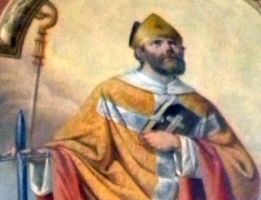
• Victorinus Petravionensis
• Victorinus von Pettau
• Victorinus Pictaviensis
• Victorinus of Patawii
Wrote a number of well-known and scholarly commentaries on the Old and New Testament; only scraps of the writings about Genesis and Revelations have survived. His works were greatly admired by Saint Jerome, and are believed to be the first writings in Latin by a Christian on the Old Testament. Noted preacher. Bishop of Pettau, Upper Pannonia (in modern Styria Austria). Fought several of the heresies of the day. Martyred in the persecutions of Diocletian.
Like many in his day, Victorinus was a Millenarian - he believed that Christ would return to the earth to rule for a thousand years. This thinking was later condemned as heresy, and many of his writings were suppressed and subsequently lost.
3rd century Greece
303 or 304 (records vary)
sword and palm
https://catholicsaints.info/saint-victorinus-of-pettau/

• Margaret Lotarynska
• Marguerite de Lorraine-Vaudemont
• Margarita, Margherita, Marguerite
Youngest daughter of Duke Frederick of Lorraine (in modern France and Jolanta Anjou; niece of Margaret of Anjou. Married René, Duke of Alençon, who was 23 years her senior, in 1488. Mother of three. Widowed in 1492. She administered the ducal estate herself, lived austerely, took care of her family, and gave largely to charities. Founded a Poor Clare convent at Argentan, Brittany, France. When her children were grown, she entered the convent as a nun, making her vows in 1520; she always refused attempts to make her the abbess.
1463 in Vaudemont Castle, Lorraine, France
2 November 1521 at Argentan, Brittany, France of natural causes
10 March 1921 by Pope Benedict XV (cultus confirmed)
https://catholicsaints.info/blessed-margaret-of-lorraine/

Pio of Saint Aloysius
3 November - Passionists
Fourth of six children of Joseph and Filomena Belpani. Known as a good student and an extremely pious child. Taught catechism to other children. Member of the Passionists, taking the name Pio, and making his vows on 30 April 1884. Noted for his piety and his devotion to the Eucharist and Mary. Was preparing for the priesthood when he died.
29 April 1868 in Trebbio di Possio Berni, Rimini, Italy as Luigi Campidello
• 2 November 1889 in San Vito di Romagna, Forlì, Italy of tuberculosis
• buried in the churchyard in San Vito di Romagna
• relics interred in the sanctuary of Our Lady of Casale in 1923
17 November 1985 by Pope John Paul II
https://catholicsaints.info/blessed-luigi-campidello/
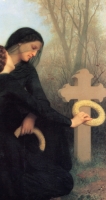
Feast in commemoration of the faithful departed in Purgatory. Abbot Odilo of Cluny instituted it in the monasteries of his congregation in 998, other religious orders took up the observance, and it was adopted by various dioceses and gradually by the whole Church. The Office of the Dead must be recited by the clergy on this day, and Pope Benedict XV granted to all priests the privilege of saying three Masses of requiem -
• one for the souls in Purgatory
• one for the intention of the Holy Father
• one for the priest's
If the feast should fall on Sunday it is kept on 3 November.
Monselice, Italy
https://catholicsaints.info/feast-of-all-souls/
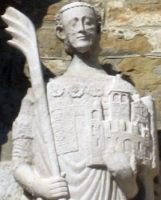
Giusto, Just, Sergius
Citizen of Trieste, Italy known for his penance and charity. Martyred in the persecutions of Diocletian.
• weighted down and thrown into the sea to drown in 303
• buried by a priest named Sebastian on the spot where his body washed up on shore
• there is documentation that his relics were in the cathedral of Trieste, Italy in 1040 and 1624
• Pre-Congregation
• there is evidence of his cultus in Trieste, Italy as early as the 6th century
Trieste, Italy
• lance, spear
• man in classical dress with flowers across his chest and holding a palm and cathedral
https://catholicsaints.info/saint-justus-of-trieste/
Marcianus, Martianus, Markianos
Born to the nobility. Soldier, commander and member of the imperial court. He abandoned the worldly life to become a desert hermit at Chalcis near Antioch. His reputation for holiness attracted so many students that he founded a monastery for them. Miracle worker; when he wished to read at night, a light from heaven would shine down on him.
Cyrrhus, Syria
• c.387 of natural causes
• buried in secret by his own request
• his tomb was re-discovered about 50 years later and became a place of pilgrimage
https://catholicsaints.info/saint-marcian-of-chalcis/

Amico
Born a prince, the son of a local Italian ruler. Benedictine monk in the Rambone abbey, Pollenza, Italy. Abbot there in 891.
9th century in Monte Milone (modern Pollenza), Italy
• early 10th century of natural causes
• remained re-interred in a stone vault at the Rambone abbey in 1510
• relics enshrined in 1929
https://catholicsaints.info/saint-amicus-of-rambone/
Born to the Italy, but gave it up for a call to religious life. Priest. Hermit. Benedictine monk at Saint Peter's in Fonte Avellana, Italy.
c.925 near Camerino, Italy
c.1045 of natural causes
• wolf, from a legend that says a wolf killed Amicus's donkey, so Amicus made the wolf help collect wood for the monastery
• farm tools
• wood-cutter's axe
https://catholicsaints.info/saint-amicus-of-fonte-avellana/
When Julian the Apostate renounced Christianity, he ordered all subjects to make a sacrifice to idols. Eustochium refused. She was arrested, tortured and convicted for her faith. Martyr.
died from general torture and abuse while in prayer in prison in Tarsus, Cilicia in 362
https://catholicsaints.info/saint-eustochium-of-tarsus/
31 October (Cornwall)
Spiritual student of Saint Patrick. Bishop of Slane, Ireland.
c.423 in Ireland
513 of natural causes
Slane, Ireland
https://catholicsaints.info/saint-erc-of-slane/
Bishop of Laodicea (in modern Turkey). Part of the Council of Nicaea in 325. Supported orthodox Christianity against Arianism.
334 of natural causes
https://catholicsaints.info/saint-theodotus-of-laodicea/
Benedictine monk and hermit at Kergrist, France. Hermit at Saint-Juhee monastery at Pedernec, France.
1340
https://catholicsaints.info/saint-jorandus-of-kergrist/
Seventh to eighth century bishop of Vienne, France.
1251 by Pope Innocent IV
https://catholicsaints.info/saint-george-of-vienne/
Tenth century anchoress in Scotland. Spiritual student of Saint Baya of Scotland. Nun. Abbess.
https://catholicsaints.info/saint-maura-of-scotland/
Martyr.
martyred in North Africa, date unknown
https://catholicsaints.info/saint-publius-of-north-africa/
Martyr.
martyred in North Africa, date unknown
https://catholicsaints.info/saint-papias-of-north-africa/
Martyr.
martyred in North Africa, date unknown
https://catholicsaints.info/saint-victor-of-north-africa/
Abbot of the monastery of Agaunum, Switzerland.
523
https://catholicsaints.info/saint-ambrose-of-agaune-523/
Abbot of the monastery of Agaunum, Switzerland.
582
https://catholicsaints.info/saint-ambrose-of-agaune-582/
Tenth century anchoress in Scotland. Spiritual director of Saint Maura of Scotland.
https://catholicsaints.info/saint-baya-of-scotland/
First bishop of Grenoble, France.
4th century
https://catholicsaints.info/saint-domninus-of-grenoble/
Martyr.
North Africa
https://catholicsaints.info/saint-hermes-of-north-africa/
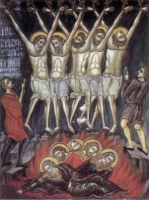
Acindynus, Pegasius and Anempodistus were Persian priests who were imprisoned, tortured, interrogated and martyred in the persecutions of king Sapor II of Persia; he considered any Christian to be a Roman spy and anti-Persian. The three were brought back to life, miraculously healed, freed from their chains, and began preaching Christianity, miraculously healing Sapor II in the process. This defiance enraged Sapor so much that he ordered them executed again; they were thrown into a cauldron of molten lead, but walked out unharmed. This miracle brought one of the torturers, Aphthonius, to convert; he was immediately martyred. Other attempts were made to kill them, and they emerged each time unharmed. Senator Elpidiphorus led a group speaking in favour of the Christians for their courage and faith; he was immediately executed. In the end the original three Christians were burned to death. Martyrs all - Acindynus, Anempodistus, Aphthonius, Elpidephorus and Pegasius.
Persia
• c.350 in Isfahan, Persia
• relics transferred to Constantinople and enshrined in a church dedicated to them
• some relics taken to France in 1204 during the 4th Crusade
• relics in France were lost when hidden from anti-Christian forces in the French Revolution
• relics in France re-discovered in 1892 in Grozon
https://catholicsaints.info/martyrs-of-isfahan/
A group of ten soldiers in the imperial Roman army of Emperor Licinius Licinianus who were executed together for refusing to burn incense as a sacrifice to the emperor. The only details that have survived are five of their names - Agapius, Cartherius, Eudoxius, Styriacus and Tobias.
burned at the stake in 315 in Sebaste (in modern Turkey)
https://catholicsaints.info/martyrs-of-sebaste/
CatholicSaints.Info Portable Edition